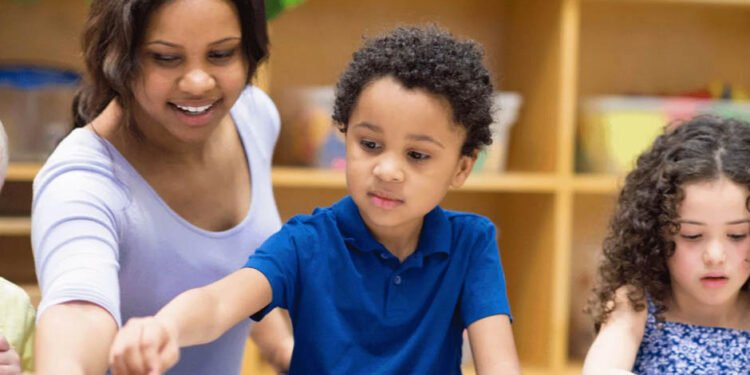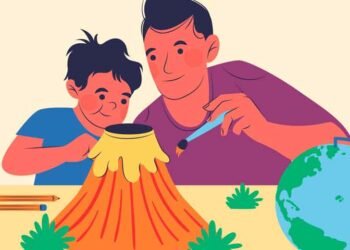Key Takeaways
- Unique and engaging lesson plans can significantly improve the learning experience for kindergarten students.
- Incorporating various activities such as storytelling, games, and hands-on projects keeps young learners motivated.
- Using real-life examples and interactive techniques helps children understand and retain concepts better.
Introduction to Creative Lesson Plans
Kindergarten education is the foundation for a child’s future learning journey, and approaching teaching in these early years is incredibly significant. Creative lesson plans can transform the learning experience, making it enjoyable and educational. Resources like Studentreasures Publishing kindergarten writing prompts offer diverse and engaging lesson ideas that can greatly enhance classroom interaction.
Employing varied teaching methods keeps young minds engaged and curious. When children are excited about their learning, they are more likely to absorb and retain new information. The magic lies in making each lesson feel like an adventure, engaging students on multiple levels. Structuring lessons to include various daily activities can also keep children interested and willing to participate actively.
Why Creativity Matters in Kindergarten
Young children are naturally curious and imaginative. Harnessing this creativity in the classroom can significantly improve their cognitive and emotional development. Research has shown that creative learning environments improve problem-solving skills and academic performance. This is especially true at the kindergarten level, where foundational skills are being developed. Creativity allows children to express themselves and learn in the most natural ways.
Incorporating creative activities in teaching helps develop critical thinking and enhance children’s emotional intelligence. By providing opportunities for creative expression, educators can nurture a sense of curiosity and confidence in their students. When children are allowed to explore their creativity, they develop a stronger interest in learning. They are more likely to approach problems creatively in the future.
The Magic of Storytelling
Storytelling is a powerful tool in any educator’s arsenal. It captivates children’s attention and helps them develop language and comprehension skills. By integrating stories into the curriculum, teachers can make lessons memorable and engaging.
Stories relating to the children’s lives or interests can make learning more meaningful. For example, a story about planting a tree can lead to a lesson on nature, growth, and responsibility. Children’s books with colorful illustrations and relatable characters can spark curiosity and encourage deeper thinking. Additionally, re-enacting stories through role-playing or puppet shows further solidifies comprehension and sparks imagination.
Incorporating Games and Activities
Games and activities make learning fun and interactive. They encourage teamwork and social skills and reinforce academic concepts. Simple activities like counting games or memory challenges can enhance a child’s learning experience enormously.
Teachers can use a variety of games to teach different subjects. For instance, math-based games can improve number skills, while word games can enhance vocabulary and spelling. Activities like scavenger hunts, group puzzles, and interactive storytime can also be effective. Games such as matching help recognize patterns and memory, while others like Simon Says, develop listening and attention skills.
Benefits of Hands-On Projects
Hands-on projects are particularly effective for young learners. These activities allow children to explore and discover concepts through direct experience. Hands-on projects can range from arts and crafts to simple science experiments, providing a tactile learning experience that children often remember longer.
Such projects not only solidify understanding but also help in developing fine motor skills. Building a model or creating artwork involves planning, execution, and creativity. By producing something tangible, children can grasp abstract concepts more concretely. Activities like growing a classroom garden or creating a weather station allow children to interact with their environment while learning scientific principles.
Interactive Teaching Techniques
Interactive teaching techniques such as group discussions, role-playing, and interactive whiteboards can significantly enhance learning. These methods keep the children engaged and encourage active participation, which is key to effective learning.
Role-playing activities, for example, allow children to step into different characters’ shoes, enriching their understanding of narrative and perspective. Interactive whiteboards can make lessons dynamic and visually stimulating. Group discussions foster collaborative learning and critical thinking. At the same time, smartboards allow for interactive problem-solving, where children can take turns answering questions and solving puzzles. Interactive techniques turn passive learning into an active experience that children find enjoyable and educational.
Final Thoughts
Incorporating creativity into kindergarten lesson plans is essential for fostering a positive and effective learning environment. By utilizing storytelling, games, hands-on projects, real-life examples, and interactive techniques, educators can create engaging and memorable educational experiences that set the foundation for lifelong learning.












